Have you ever wondered how marketing can be a catalyst for personal growth and transformation?
On today’s show, James Guldan, owner of Magic Agency, shares his powerful story of how marketing saved his life during a period of severe health challenges. As a seasoned expert who has generated over a billion dollars in sales for renowned clients like the Dalai Lama, Peter Diamandis, and Frank Kern, James offers unique insights into the role of empathy, vulnerability, and authentic connection in creating successful marketing campaigns.
He discusses the concept of identity and how marketers can help their customers redefine themselves in a more empowering way. He shares his proprietary system, developed through 15 years of trial and error, that helps transformative entrepreneurs scale to eight figures and beyond using custom funnels and omnichannel traffic strategies.
From practical tips on conducting empathy interviews to profound insights on the nature of human connection, this episode is a must-listen for anyone seeking to elevate their marketing game and make a positive impact in the world. So without any further ado, on with the show.
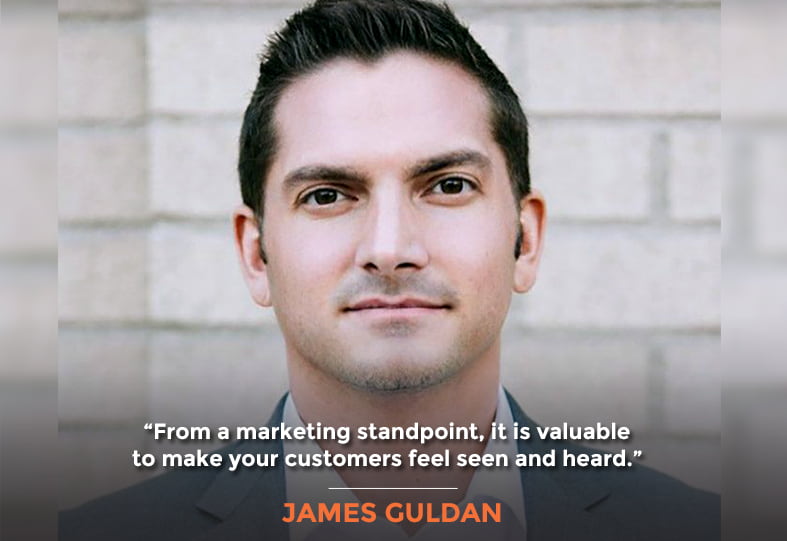
In This Episode
- [04:35] – Stephan asks James Guldan about the impact of marketing on his life, leading to a discussion on the power of communication and empathy.
- [08:08] – Stephan addresses unspoken problems to gain trust and credibility, with James emphasizing loving-kindness over shame in marketing.
- [14:04] – James discusses the importance of addressing underlying mental conversations that create a scarcity mindset around time.
- [21:03] – James advises against nagging or manipulating clients, instead of focusing on helping them achieve their goals and understand their “why.”
- [28:37] – James believes that uncomfortability can be a catalyst for change, citing his own health struggles as an example.
- [34:43] – James reflects on his mental health journey and the role of marketing in his recovery.
- [40:10] – James and Stephan discuss the idolization of luxury brands and capitalism’s impact on mental health.
- [51:39] – Stephan and James discuss polarization and marketing, with James cautioning against using polarization in marketing.
- [56:15] – James connects empathy in interviews, seeking to understand their problems and experiences, while Stephan connects empathy interviews to design thinking.
- [58:41] – James elaborates on the value of empathy in marketing, using storytelling and open-ended questions to gather insights.
James, it’s so great to have you on the show.
Thanks for having me.
Yeah, so I have to tell you that I loved our conversation that we had on my other show on Get Yourself Optimized, where you just bared your soul, you shared with so much vulnerability and authenticity, the dark night, not even night, year or two or whatever of your soul that you went through that would have just caused a lot of folks if they went through the same thing to check out, to just leave this physical world. You persevered, and your story is so inspiring and beautiful.
So, first of all, I want to give a shout-out to you and express a huge appreciation for your willingness to share that story and go to that depth with me. I just want to encourage and inspire our listeners to check out that episode on Get Yourself Optimized, which is episode 436. It’s incredible. That’s all I have to say.
That was my favorite podcast of all time. Before we did this, I talked about one of my biggest KPIs for a podcast: when your mom calls you crying. What a gift to be able to get the KPIs that I have for these. Well, I think everything’s related, right? I think vulnerability is related to communication, which is related to marketing, which is related to everything.
So your mom called you, crying after listening to that episode.
Yeah. Well, I think it’s interesting that the questions you asked got deeper than most of the things you discussed with your family. Communication is different for every person, and you get to see how vulnerable you are to people. The interesting side is you’re a very easy guy to be vulnerable with. My amazing compliment to you is you’re incredible at this. It was a really cool conversation.
I’m excited for this one as well.
It is a gift you get to turn internally and use everything you’ve learned in the marketplace to do it for yourself.
The way it unfolds is always a surprise and miraculous because I just allow the words to come. I don’t know what the conversation will lead to or how it will unfold. I just know and trust that the creator and my unseen support team are going to put the right words in my mouth. It’s all going to unfold beautifully.
Yeah. I love that.
You said something before we hit record here, and I just want to bring that to the forefront and start the interview that way. Marketing saved my life. You said that just a few minutes ago.
Yeah.
Can you please elaborate on how marketing saved your life?
Well, I don’t think it’s a hyperbole. When I say that, people assume it is, but marketing is all about communication, making people feel seen and heard enough. There’s no more simplistic explanation of marketing or communication in general around making other people feel seen and heard enough. I think from a healing perspective, what a gift you get to turn internally and use everything you’ve learned in the marketplace to do it to yourself. There’s no deeper healing modality than how deeply you can love yourself, how deep and vulnerable you can have conversations with yourself, how open you can be and how changing nomenclature language matters, how empathy is built in there like we talk about in our industry, doing empathy interviews and understanding the other person. But you can do that with yourself, and using all the tactics I learned to make a lot of money, I used to save my life, which is the best gift of all.
I think the coolest thing is my health journey. If you haven’t listened to it, the nuts and bolts of it are that I was praying for death for three or four years and was severely disabled. So basically, I wasn’t able to see, hear, or walk, and I had a lot of disabilities. But the beauty of that is to be able to communicate yourself. Pain is a beautiful conversation to have, and suffering creates an amazing amount of joy in your life. It is something that, from a marketing standpoint, people don’t understand how valuable making your customers feel seen and heard enough actually is.
Many people want to get into the tactics of how to market, but the reality is the fundamentals.
Human beings just want to feel seen and heard enough. I think if you can make them do that, you can sell them anything. That’s how real businesses are built. They’re built via a brand that makes them feel seen, and heard enough through the mission, values and beliefs, indoctrinations, and many different pieces. But that’s how the real community is built, which many people call a brand. One of the best skills of all is to learn that.
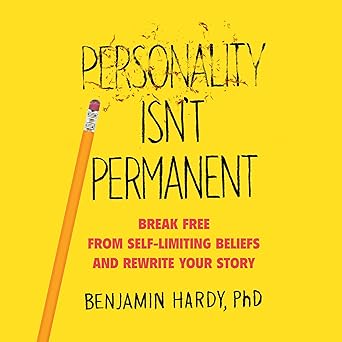
On the flip side, if you were not to sell them, you would do them a great disservice because that would prevent them from taking the next leap forward or going to the next chapter in their lives or business. So you’re doing a great service to humanity by selling them what they need and want, as long as it’s for their highest and best good.
Well, as long as you’re not selling shame or fear. I think there’s always an alignment of what they need, and getting into that, I understand the market sometimes feels that marketing can be evil, and it can. It can be manipulative in many different ways. When we talk about changing human psychology, mass control can be very easy to implement. The human brain is not as wise or understanding as most people think. It is a very easy tool to manipulate. When you do it for somebody’s best interests, you are doing them an amazing service by selling them something that you have.
If you don’t believe that that’s true, don’t be selling what you’re selling. Use that as a gut check of saying, like, if you don’t believe this is in their best interest, never sell somebody that you don’t feel will change their life in a very positive way.
Yeah. So persuasion techniques, the kinds of stuff that you’d find in Robert Cialdini’s book Influence, can be used for good. It can be used for bad. By the way, Bob has been a guest on this podcast, episode 201, for our listener, who is interested in learning about influence and persuasion techniques for good. If you address what’s not just at the surface, but what’s under the surface, what is the unspoken problem for that consumer prospect, you’re helping them to identify what’s troubling them. Also, you are building rapport and relatedness, and then you’re helping them find the path to a solution to a brighter future.
If you just keep it on the surface level, and I learned this from the book Building a Story Brand by Donald Miller, there’s the obvious spoken problem, what he calls the external problem. Then, there’s the internal problem, which I like to refer to as the unspoken problem, that one behind the mask, behind the scenes, that the consumer or prospect, won’t discuss.
But if you speak to that, wow, they feel heard. They feel understood. They feel gotten by you. As an example, I don’t remember where I heard this from. There’s a woman who’s struggling with weight. There’s a certain dress that she has to maintain in her wardrobe, even though she hates it. She might refer to it as the fat dress or whatever that will always fit when nothing else does. If the jeans don’t fit, whatever, then she can turn to the fat dress, and she hates having to have that fat dress. The weight loss regimens that she might try out may work for a time, but then she might get the weight back, and then there comes out the fat dress again.
So the first, the spoken problem, the obvious external problem, is I need to lose weight and keep it off. That’s where a lot of the marketing goes. What if, instead, you addressed the unspoken problem for that woman and spoke about the fat dress or whatever the equivalent terminology is for your market, burn that fat dress, and never have to worry about having one in your wardrobe ever again? It’s like, “Wow, I feel gotten by whoever this is.”
I love the beauty of not selling somebody a thing but selling them a lifestyle change, a mission, and something much more than what they’re buying.
You can go even deeper and make them feel enough, right? Cause if you can tell somebody something they don’t yet know about themselves, you get instant trust and credibility if they feel it versus them going, “Okay, everybody knows my problem.” The weight loss industry is very common. It is incredibly commodity-based because there are so many people in the market. So, the messaging is all over the place. The sad part is the weight loss industry is usually shame and fear versus love and kindness, and getting people to love themselves and understand and transform their internal process to transform their external self. But it is a very powerful way to get trust and credibility. Once you have trust and credibility, you gain a lot from them.
Yeah, the before-and-after approach that most folks take in the weight loss industry may be effective, but it often lacks empathy. Loving kindness might make you feel less ashamed.
Right. They did it. When you get the opportunity to answer two questions for somebody; “Can it be done?” This is the first question. And then, “Can I do it?” If you can make them believe that it can be done, that this universe has solutions to their problem, and that they can do it themselves, you’ll have the principle of commitment. When you get the principle of commitment, you can do a lot. It starts with that conversation.
I think a lot of marketing is the top one to 3% of people are solutions-oriented. They know what they want; they’re going to look for it. The top 10 to 15% are problem-oriented, where they understand their problem, where you just have to empathize with their problem. After about 30% of the total addressable market, it’s a lot less than that. But you’re trying to figure out what the four or five problems are in that market and ideally handling them in a kind, positive way. When you handle it with shame and fear, you’re getting a short-term person who hates themselves. That will transform into something different, and they will not greatly represent you. If you can’t transform them internally, only externally, they’re going to be a very short-term client, and you’re not able to build a business out of it. You build a product because building a business requires solving a problem by creating a new problem, solving another problem, and creating another problem.
That’s where you get my real expertise in the customer journey. That’s where I love the beauty of not selling somebody a thing but selling them a lifestyle change, a mission, and something much more than what they’re buying. You sell them what they want and give them what they need. I think it’s the most beautiful aspect of growing a real business. The scale aspect from 3 to 50 million requires not a product but a business, ecosystem, community, and many other brand-oriented things. I think you have a lot of opportunities to do that.
Can you elaborate? Give us maybe an example.
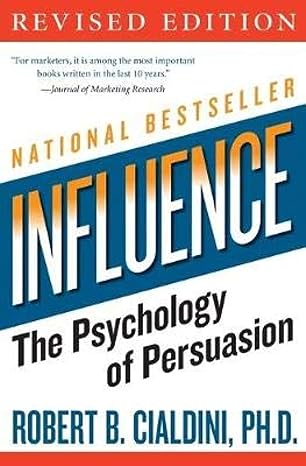
Example of what part?
An example of that customer journey: the lifestyle change, maybe for a client of yours, for which you’ve instituted a system and a whole ethos.
So, let’s talk about the mental health market. It’s one you and I love, and the mental health market is tough. Most people are not very solutions-oriented. There’s a stigma around mental health, especially over a certain age demographic and psycho-demographic. So, to understand the initial problem that somebody has, it’s usually going to be something very common during entrepreneurship time.
People have this viewpoint that there isn’t an abundance of time. They think it’s very scarce because they have a lot of underlying mental conversations about not seeing this world as abundant. They see it as scarce. But you can’t address that, right? You have to address their concern, which is that I need more time, which you can then address.
Here are some tactics to optimize it, but the reality is you’re helping them create a little bit more time to transform their mental health. That’s where you get into deeper conversations about how you love yourself. What are the things that make you tick? How do you control your subconscious versus your conscious mind? Your subconscious controls 97% of your decisions, and 3% is your cognition of what you actually think. So, if you can prime and change your subconscious, which is a long-term solution, how do you do that? So you’re selling them originally how do they get more time than you’re selling them? How do they love themselves more than how do you love your significant other? So you take their problem set and break it up into a bunch of different problems where you could have that customer forever, right?
There are infinite problems related to time, especially in mental health. Then, it’s about how you have conversations with your children. How do you create an identity around this? How do you change your identity? How do you map these things out? But that way, you’re not selling a one-off problem because what happens is the cost to acquire a customer, especially on cold traffic; you’re on the organic side, in which the cost of entry is time, attention, and long-term investment.
You must have a much deeper customer journey because the acquisition model is much more expensive in cold traffic.
But it is capped right on your end where cold traffic becomes a lot more difficult because they’re not finding you; you’re finding them. So, you must have a much deeper customer journey because the acquisition model is much more expensive in cold traffic. And especially as you scale, because you’re finding different problems, you’re finding more awareness, and a lot of different things to scale. And if somebody can sell more things to that customer, their lifetime value will be much higher than yours. So they’re going to crush you. That’s why the big players typically win. You don’t want to mess with them right away.
You want a total addressable market of 11 million to start. Anything bigger than that, and you’re swimming in deep waters with people who will kill you with acquisition because they can have attribution metrics that they can acquire a customer for more expensive than what they’re going to get out of them for at least 90 days. And that competitor is going to crush you. So you want to stay under the 11 million, but you want to make sure you have a lifetime value that, at some point, you could compete with the big boys. And at that stage, you can go to a bigger, totally addressable market.
So, what would be an example of an offer that you have helped a client craft and maybe set up a whole set of upsells, downsells, cross-sells, and so forth to really optimize and maximize the opportunity?
I think the first 90 days is the most important because that’s the real stick rate, and it’s hard to kind of have KPIs or anything else after 90 days. So, what we do as a company is we focus on the first 90 days because once you get the first 90 days, the rest of it becomes pretty easy because they’re aligned with value, belief, and indoctrination.
So, let’s go with the mental health side of it. So, in the beginning, you sell them a time product, which is a book in the beginning on how to optimize your time. Then, it goes to a checklist of things that you can optimize. So, it summarizes the book and makes it easier. There’s an audible version that’s an upsell. Then it goes to a seven-day workshop series on how to get more out of your day with accountability worksheets before and after; the reality is you’re just trying to have them understand their why. Why do they want more time? Why do they want to do this? So that’s what the workshop’s about. Once the workshop’s there, you get their why. That’s where the onboarding starts, where they can join the community of coaches to optimize their time and figure out a plan for them to understand where they’re at and how to get them through that. So much of that’s about onboarding, especially mental health, in this case. But for most products, if you have a long, lifetime-like lifecycle of the customer journey, you want to do onboarding. And that’s where you tell them who it is for and get clear on who it isn’t for. Like the next step of, “Okay, you must have these things to succeed moving forward.”
The secret sauce: the onboarding step of letting them tell you what they want, and then you give it to them.
But the reality is you want to understand their story, right? People love to tell their stories, and they love to tell their why. If you can understand their why, you get to use their nomenclature, their understanding. You don’t want to be the hero to anybody. You just want to be the guide. So you don’t want to tell them what to buy. You want them to tell you what they want to buy. And that’s like the secret sauce: the onboarding step of letting them tell you what they want, and then you give it to them. From those steps, you can understand why.
It also helps with conversations if somebody gets overwhelmed. Because if you’re dealing with stuff like mental health, you’re dealing with a lot of trauma, you’re dealing with a lot of resistance. So it’s helpful if they’re having issues anchoring back in. “Is this still your why? Is this still what you’re trying to solve?” And if it is, “okay, it will be tough to go through this. And I know you’re going to want to quit, and I know you’re going to want to do these things. But the reality is, if this is why it is really important to you,” which people really only have three things they care about in their life, I think people overcomplicate it. But if you’re not on the three most important things that a customer cares about, there won’t be an easy buy, and you won’t scale. So you want to be their top three problems in their life and understand that psychogeographic very well, but you really want to anchor in and figure out where they’re at and then continue them down their journey and walk them through it.
Here’s when you understand why you can custom tailor a path for them that will be successful. And because you know you’re going to get an amazing lifetime value if you have a monthly recurring revenue product or an annual recurring revenue product, it’s all about aligning incentives for how long they can stay. The most beautiful business model to have is recurring revenue because it aligns incentives on both sides. The company has to provide enough value for somebody to stay, and the customer has to believe in it enough to stay in a long enough commitment for them to get real transformation.
Yeah. Now, who this is not for? For some, it probably sounds like the takeaway or reverse psychology, or, in other words, manipulation. But that’s not what you’re describing here. You’re talking about helping them, too.

No, that’s. So what you’re talking about is negging.
Negging from the pickup world.
Yeah. That’s using the pickup artistry. There’s an energetic community to a relationship with somebody. You can either bring somebody up to your level or make that make you feel better by bringing them down. Right. And you don’t want to make them feel better by bringing it, but you do want to understand who it isn’t for.
I think a lot of people have a really tough problem with going, who is my product not for? And who will not be successful in it, and who are the clients that are not going to get the same alignment or goals? I think making sure you’re clear on who it’s not for is good for the audience because it gives them a hug like, “Oh, that’s not me.” The biggest psychology tool you can use is in-group and out-group. That is basically you want to go, “Oh, that’s not me.” That person’s crazy. The political system does it perfectly, I see, in a net negative way. But you can do it in a net positive way where you want to create a group of people who are, no, this is me.
The company has to provide enough value for somebody to stay, and the customer has to believe in it enough to make a long-term commitment.
It makes it better for referrals, too. This is in-group and out-group. “Oh, that out-group is crazy.” Or “they don’t know what we know.” If you can have that type of group mentality and indoctrinate that in the beginning steps, it creates a long-term trust metric. That’s how viral and good the referral system is for a program because cold traffic and organic traffic are only as good as you can scale it. When referral traffic becomes insanely powerful, warm traffic becomes insanely powerful at scale.
CrossFit has done such a good job. If you ever talk about somebody who’s done CrossFit or 75 Hard, right? They’ve done such a good job of, like, “Oh, you can’t do it. Those are the weak people, but the strong people are the 75 hard.” When you have that type of in-group mentality, they use a challenge in it, which I love in overcoming a difficult task, trauma bonding can be insanely beautiful for indoctrination and moving people forward in a very positive net direction where there’s a barrier to entry to get into your product.
I love what they’ve done with 75 Hard because they took one of the most difficult commodity-based spaces in the world and crushed it. I love those businesses with a pattern and rep product where they’re like, “Oh, you know, P90X, that was way too easy. That’s for your grandma. This is for men or women who are just really looking to crush life. It attracts a lot of people in that regard who don’t want to be seen as weak and want to internally feel as insanely strong and hard. They’ve done a really good job with in-group and out-group, so they don’t have to do the marketing that most others do. They have such a polarizing message and an in-group and out-group that you’ll hear about it.
Right.
If you don’t have any friends who are in 75 hard, that’s all they talk about for at least 75 days. They post it online and everywhere, like they went through it or, “Oh man, I didn’t make it. I get the opportunity to reset.” But they’ve done a beautiful job marketing that.
Yep. Well, you know, it’s got legs if there’s a subreddit dedicated to the program.
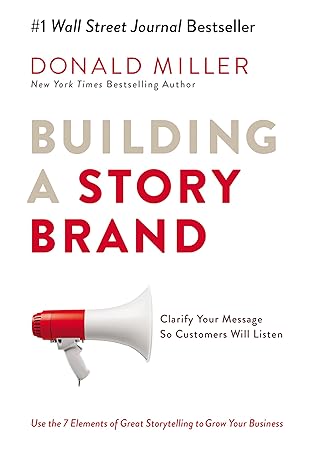
Yeah, that’s your KPI for success. But it’s a lot more than just a subreddit, right? I mean, there are underground overground communities for it. There’s a lot of community aspect to it. In real brand building, when you can align value and belief systems, it is an insane in-group out-group metric. It’s very difficult to beat that. Especially in that space, because weight loss and muscle gain can be a commodity-based space where people try many different things. But if you’re doing 75 Hard, you’re only doing 75 hard, you’re not doing that yoga and other things. You’re dealing with that thing, that one massive challenge right now.
Yeah. Have you done it?
I don’t need to. I don’t see myself. I’m not that target demographic. I internally feel strong. I internally feel love and connection. I have a good body image of myself. So you tend to eat the right things when you’ve aligned. You can control your identity and how you see yourself.
There’s this great book called The Status Game, where you can control your status of what you think. My status is a great husband and a great dad. As we discussed earlier, most people have a work status, right? Their identity is all around their work. That creates a very limiting perspective on how they see things and can change the world, where you can choose your identity.I don’t think many people know that personality test. Dr. Benjamin Hardy wrote a great book called Personality Isn’t Permanent.
Yeah, Personality Isn’t Permanent.
It allows you to change. A lot of people map them when they’ve been labeled by others. You can use this in the marketing aspect of really figuring out, like, most people who’ve labeled you didn’t have your best interest in mind. Right? Your parents and teachers had their best interests in mind, not yours. You get to change that label of what you want to do in this world. When you do that, you get to align your values and beliefs with what you’re going to do.
It’s pretty unstoppable to stop somebody who’s changed their status and identity to something they want. You don’t need a challenge for that, right? It happens, and you go through it, and your identity changes.
If you can't transform customers internally, they'll be very short-term clients, and you won't be able to build a business from them. Share on XSo, do you have a book that you’re going to put out? For example, Andy Frisella has 75 Hard book. Do you have something that is cooking?
Yeah. If somebody hasn’t listened to my personal story of my health journey, it was amazing. It was beautiful and incredible; I tied the business aspect with that. Right. So, the book I’m writing is in the mental health world, specifically about how to love yourself in a very powerful way. I don’t know what the title is going to be yet, but we’re mapping it out. I have a very specific methodology that I’m optimizing to get there, and I feel very called to tie everything in.
At one point in my life, my identity was around I’m a really good marketer, and that was great. It was awesome to do it, but my identity now is much different than it once was. I think a lot of people get the opportunity to change that. I’d love to see more kindness, love and acceptance in this world. It starts internally. That’s kind of what the premise and mission of the book will be.
Yeah, it’s amazing. I’m looking forward to it. When do you think it’ll come out?
The entrepreneur who’s too tightly scheduled cannot transform. – Dan Sullivan
I probably have a year left. It’s like the first one is trash. I don’t think I know what I’m talking about. Then, you slowly get through the revisions of continuity and understanding, like how to make it happen. But that first revision is pretty unforgiving. So, it does take a bit of time. Right now, I probably work about three to 4 hours a week. So, that’s my total work time. And just because a lot of my time and attention is spent elsewhere, and I’m doing things with Tony Robbins and Dean Graziosi right now and, like, some stuff one-on-one. But the reality is I put a CEO in charge of the business and a CMO in charge of the results engineering, and it has been one of the best things I have ever done. I just get to coach them and they also coach me on how to be the best investor in my business, if possible.
Yeah. Amazing. As Dan Sullivan says, the entrepreneur who’s too tightly scheduled cannot transform. So you’re on the opposite end of that spectrum.
What I think it’s so easy to get stuck in. The mental health side of it is that I think it’s easier to feel really distracted. I think most people are not their own best friends. Most people have; the only time they really get with themselves is in the shower, which is why they call them shower thoughts. What is interesting to me is that they get seven minutes in the shower by themselves. But the reality is man, you’re such an amazing thing to converse with, and you get this amazing opportunity to get to know yourself and really love yourself in a very powerful way. And I don’t think a lot of people do that.
They use work as a tool to distract and to see themselves through status and identity that a KPI is really easy to measure. How much money do you make? But I think capitalism is great in many ways, but it does not help our education system and our healthcare system, and it also doesn’t help mental health. A really good employee is one with terrible mental health, somebody that is really bad with boundaries, somebody that does not respect their time very well. We see that as a really good employee now. I would love for that to change.
Yeah, me too. Speaking of shower thoughts, the name that popped into my mind when you said that was Nick Offerman. Have you seen his?
There are a lot of people who have become famous, like theCHIVE and other things. They have like a bunch of shower thoughts and like the interesting tidbits of transformation. It’s like a one-sentence thing. It’s amazing that when you give yourself time and space to think, you can become such an amazing, better person by doing that. A lot of people don’t love to be uncomfortable. Uncomfortability is the pain has to outweigh the problem. Suffering is an amazing catalyst for change.
Uncomfortability is beautiful. I like to see now that I am obviously blessed with a lot of suffering through my health component, but I see it as a cold tub of life. It gives you the transformation, the opportunity to overcome really difficult things, and the opportunity to gain insight into yourself. That way, you get indoctrinations and belief systems, like all the things I’m talking about from a marketing standpoint. You get to do it internally as the CEO of your own body, and you get to manage, change, and transform a lot.
Yeah. By the way, do you do cold tubs? Ice baths?
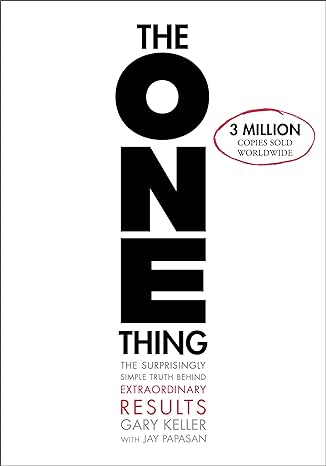
Yeah, a couple of times a day.
Nice.
Again, it’s everybody’s journey to do it, but it’s one of the most fun because I do about 3 hours of meditation a day. I do quite a quite of cold tub. I love the sauna for transformation workouts. Like I do an hour workout. What you fill your time with is amazing when it isn’t busy work. I think a lot of people think they’re really busy, but the reality is that you will be amazed at how much that will transform your life of just doing one thing a day and being like, I crushed that one thing. Gary Keller has a great book called The One Thing. Do one thing a day. If you can’t think of only one thing to do in a day, you’re overwhelmed with a checklist. You love the dopamine of just checking things off. If you really focus on what’s only one thing you can do in a day to move it forward, you’re going to see a lot less overwhelm, a lot less anxiety, a lot less depression, and a lot more results.
If you have a problem in your life, break it down into one thing a day, and you do that, and you crush it. When you do have space, it’s amazing what you fill it with. You know, I do a lot of meditation with my younger self, and a lot of it is finding joy in what you want to do, what brings you joy, what did I do as a kid or what I wish I did more as a kid. And I do it now, and I have the opportunity to have a two-year-old son. So he and I build forts together, watch video games, and go on adventures. Like, we get to do all this amazing stuff every day. I like to spend six or 7 hours a day with him versus work. And there’s an incredible stat that by age twelve, you’ve spent 65% of the time with your son or daughter available to them. By 18, 95% of the available time you will spend with them is by age 18. That’s just an amazing stat. I think it encompasses where I put my time and attention.
Right now, the coolest thing is to reparent yourself through your children and let them teach you all about the world, how amazingly curious kids are, how much energy they have versus how much energy we have now, and how to get that back. I mean, they unlock a lot of secrets by just hanging out with them and listening to them.
When you can give customers permission to transform, your brand just becomes a lot more powerful. Share on XI don’t know if we spoke about this in the previous interview we did on Get Yourself Optimized, but when you were talking about meditating, connecting with your younger self reminded me of my interview with Ray Brehm. Ray had this incredible experience when he was attending a Hoffman Process event, and the instructor told the group to imagine their eight-year-old self going through a particularly hard time that they might have gone through at that point in their life, in their childhood and to then send love to that version of you. And say these words: everything’s going to be okay. I love you. I’ll see you in the future. And he did that.
What was really interesting was that this flash flood of memories came back to him from his childhood, where he actually remembered doing that with himself and receiving that message, and he was very distraught at that time. He was contemplating suicide or running away or something drastic. Then, he heard that in his inner voice, and it really calmed him and helped him. He forgot all about it until adulthood. And there he was at the Hoffman process, creating that experience for his eight-year-old self. How cool is that?
Yeah, I have a personal belief that that’s real. One of the moments that I had when I was really sick, right, I was peeing blood, I had yellow eyes, my hearing had gone out. I wasn’t really able to walk. I remember sitting in my sauna, just really contemplating the beauty of death, just how kind it would be to kill myself and how amazingly awesome that gift would be. And I’d heard my future self-talk to me about it and just go, “You know what? Don’t worry about it. You’re having a tough time. You’re going to get through it. I’m, you know, five years from now, and you have a different version of this. It’s really tough right now, but you got this. Don’t worry.” And I just remember crying for hours in that state and just being like, “Okay, that’s all I needed to hear.”

I think it’s so easy to give up when you don’t have a good vision of recovery. You don’t have a good vision of anything ever getting better. It’s especially tough when you keep losing things, right? You’re losing. You’re getting more and more disabled. I think that it becomes very easy to have a conversation with yourself of, like, the kindest thing I can do to myself is end this version of me right now. And so totally believe in that.
To tie it back into the marketing side of how marketing saved my life is, this is very beautiful to do with your customers, too, is like, “What does their eight-year-old self want and bigger, what does their 80-year-old self want? What is the wise version of themselves” I also do a meditation where I talk to my 80-year-old self, and that dude is smart, wise, kind, and understanding, and being able to talk to that person gives you your ideals. If you take your values and beliefs right now and extend them over the next however long it takes you to get 80, what does that ideal person look like? How do you bridge the gap between them and you? And that’s what I view as one of my most powerful meditations is doing that.
But also, from the marketing standpoint, what are your customers’ values and beliefs? Where do they see themselves 80 or 40 years from now? If you can tell them, you become the best mental health gift they will ever have, confirming that they are their best selves and that they are enough. If they continue down the path they’re on right now, they become the hero in their hero’s journey. I have this great quote “If you approach everybody as if they’re going through the hardest time in their life, you’re going to be right 90% of the time.” Right? So it’s amazing how much empathy and understanding you can give people from a marketing standpoint by just telling them. The guy from Blue’s Clues came back on. He’s just like, “I’m so proud of you. Everybody who made it through to this, who watched me as a kid, I’m just so proud of you.”
The core insight is that people seek transformation to become different.
It’s amazing when you tell people that what they internalize and how they view and can forgive themselves in a very powerful way. When you can market that way, you get the transformation you’ve never seen before, especially in the transformation markets, right? Because most of what we do is in information products. Like, we are one of the best in the world at information product selling. And it’s because of that, right? You’re looking. The core insight is that people are looking for transformation to become somebody different.
When you give them permission to do that and you give them a hero’s journey of telling them they’re enough and telling them that they are the hero of their own journey, and they’re making their way through, one it helps them through tough times because they’re usually in a really tough time right now. Hence, they’re looking for solutions, or at least they’re identifying with a problem. And two, it gives them permission to transform. It gives people who sometimes need permission to go. Things can change. When you can give that to them by identifying with their 80-year-old self or even with their eight-year-old self, what would the kid version of you do? The kid version of you would probably be a lot more forgiving to yourself than you are right now.
They’d probably be a lot more curious. They’d probably have a lot more play. There are great statistics on the happiness level of people with an identity around playing and those who see play as negative.
It is astronomical to see how happy people are who can play. When you can give them permission to do that, it just becomes a lot more powerful.
Amazing. Also, that’s Blue’s Clues 25th-anniversary video.
You know what I’m talking about?
Yeah.
He did an amazing job of saying, “Hey, here’s where I’m at now. And I know where you’re at. I know, I’m proud of you. You should be so proud of yourself.” A great gift to give people is permission to be proud of themselves.
Yeah, for sure. Amazing. So, of course, the converse of this, of really going in internally and meditating, asking these tough questions, and being open to the answers, whether they’re from your younger self, older self, higher self, or God directly. The opposite of that is being afraid to be alone with your thoughts. Always playing music in the car or podcasts or the house or wherever you’re at, playing TV in the background, or some sort of chatter to keep you from your loneliness. That’s a real problem because you don’t have time to connect. You’re just filling that void with constant noise.
Especially in our capitalistic culture, That’s how consumerism is created, right? Are you filling that void by buying an identity and something you hope will give you enough dopamine to make you feel okay? That’s why we have such an amazing issue of indentured servitude in America right now. People are buying things with things that they can’t afford to solve, a problem that they won’t solve. And that’s where I think marketing can be evil. That’s where I view marketing as something that, when you’re selling something, is like,” Don’t worry, this will make you happy.” It isn’t a transformation internally, or you’re not making them the hero you’re making. You’re the hero that internally is idolized. I think that can be very detrimental to somebody.
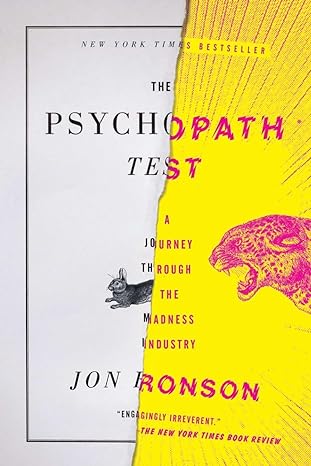
I think Louis Vuitton has made this big of it. Don’t worry; buy a $3,000 purse. This will make you validated. This will make you feel enough. This will make you feel in there. And buying a luxury item will not do that, right? Only you can give yourself permission to feel enough, but it doesn’t make that conversation happen. I would say Louis Vuitton is probably one of the best luxury goods in the whole piece. That whole conglomerate does an amazing job of being in or out of a group, making you feel not enough and making you feel shame. They’ve done an incredible job marketing from a negative angle. That’s something that, as I gain more insight and expertise in the marketing side, is something that I want to address, change, and stop.
Hence, I only think that happens through mental health. I think that when you are comfortable talking to yourself and seeing yourself as the amazing person you are, you have way less consumerism. You buy needs versus wants. Most of us have wants and not needs, and we see them as needs.
America is probably one of the toughest consumerism countries in the world. It’s due to marketing, right? We are allowed to market to children. There are three protected classes in the world, right? The young, the elderly and the mentally disabled. The mentally disabled is what I meant. I think if you can market to those people, that should be illegal. If we are putting something together, like that’s something I would really, love to stop, is being able to market to those demographics because they’re too easy to manipulate in a negative sense. Marketing can be very life-changing in a negative way.
When you market to children, they see what you say as fact. There are a lot of negative, detrimental items you can do to them. But again, you can do very positive things if they have consent and a brain’s willing to go. Is this actually in my best interest? That’s where I hope marketing goes in a much different direction. I love what’s been happening with the FTC. The Federal Trade Commission has been stopping a lot of overpromising and under-delivering. I’m like, “Bring it on.” I love it when they can stop certain things like that.
Real businesses are built via a brand that allows humans to see themselves through their mission, values, and beliefs—it's one of the best skills to learn. Share on XI think when there was a process in California, everybody was frustrated that they stopped subscription laws. So, that had to be as easy to cancel as it was to start up. I don’t know if you ever remember extenders, but they had this policy where I think, at one point, you had to get a doctor’s note that your penis didn’t get bigger. So you were using shame to cancel a subscription. Of course, they grew a conglomerate on it. But that type of stuff should be very illegal, and it’s trending in the right direction. But the mental health side of marketing, I think, can be so powerful if you use it to build people up rather than tear them down.
Yeah, I remember hearing a statistic. It’s about Louis Vuitton’s customer base and the average.
Oh, it’s under like 65k a year. So people want it to signal wealth, right? It’s a great signaling tool. The primary buyer of luxury goods is poverty. Right. It’s really not good because they want this identity of feeling wealthy without internally feeling that way. They want to use signals to make people think that. And that is powerfully negative in a lot of different ways.

I think capitalism has a lot to do with that. You may not want to knock on capitalism too much, but it also creates this identity crisis where your KPI for your worth as a human is money. I think that’s messed up. It is one of those things where I think capitalism has destroyed the mental health of people because not everybody’s built to make money. I don’t think that’s a very valuable KPI for how valuable a human can be. Louis Vuitton and other places like that are using negative marketing and shame to get people to do that. I think that’s just a really tough position from a marketing standpoint. I hope that changes. I really do.
Yeah. So, you used the word idolization a little bit ago, and I want to circle back to that. That got me thinking about the whole idea of false idols, idol worship, idolatry, and how when we put our faith and trust in whether it’s a brand or an object or a guru or a tool or resource, as an intermediary, instead of going direct to the creator, we’ve really fallen off the path.
You’re delegating your decision-making, values, and beliefs to another person, and I have a very polarizing belief that I don’t think heroes should exist. I hate using the word should, but I think the only hero you could have is either the universe itself or your version of yourself at a later stage because they have different problems, values and beliefs. There are many different things people have that you’re never going to match up with every decision they make. I hate the oversimplification of polarization. It’s like it’s either this or this. There are a lot of complications for people. You agree with a lot of amazing things.
Joe Polish does this at the events, and he goes, “Name the three people you admire the most and then what their qualities are and name the three qualities that they have. Those are the things that you care about. The values and beliefs that you really care about are those things, not the person. That person is flawed, and every human being is insanely flawed in a lot of different beautiful ways. But looking up to somebody, that’s the “I am not your guru.” They did a great documentary on that.
But give up your decision-making to somebody else you feel has your best interest in mind; nobody has your best interest in mind. Right. I want to be so clear on that. Only you have your best interests in mind. They have an idea of your best interest, but it’s not you. So, when you can be your best friend and love yourself in a very powerful way, you get the opportunity to consult yourself and really dig deep and go, “Okay, does what they’re saying aligns with my view? And if it does, let’s do it. If it doesn’t, let’s not do it.”
I think it can be so dangerous too, not just from a biblical standpoint, but just from a practical standpoint, to delegate your healthcare market. If you were to delegate your health to the healthcare market, you are in for a really tough ride. If you think those doctors care as much about your health as you do, you are in for a really tough journey. If you get really sick, the first thing you do is learn more about that illness than any doctor ever could. When you can do that, you use them as consultants versus somebody who’s there to save your life. Because they’re not. They have a million other things to do. You may be a priority, but it is one of their many priorities.
A priority for the ten minutes they’re assigned to you, and then they have to move on to the next patient.
Your mission, values, and beliefs—and how you can align those with your customers—define your brand’s reality.
Yeah. And humans are fallible in such a powerful way. I think it’s just one of these things where somebody has this belief system that somebody else knows better than they do, which can be very dangerous. I think it can be insanely dangerous to do those pieces.
Yeah. This gets me thinking about how, again, Donald Miller has the StoryBrand Framework in that book Building a StoryBrand. He talks about how there isn’t just the internal problem or what I referred to earlier as the unspoken problem; there’s also the philosophical problem. And if you can get down to that level of understanding with your prospect.
But that’s the mission, right? You gain a mission of why things should change. That’s the most powerful aspect of any business or building any brand. I think most people really want to overcomplicate brands by being like; “I want a logo and some font types.” But the reality of what a brand is it’s your mission, what do you stand for, your values and beliefs and how can you align those values and beliefs with your customers in order to build trust and credibility to be their best bet.
There’s this amazing brand. It’s called, Just Ingredients, they curate a bunch of good products, where they’re like healthy products, and my wife only buys things from them. If they put on anything, we will buy anything they have because we know they’ve been vetted through this health place. It’s like if you can build that in there where you have enough trust and credibility, where they’ve done their due diligence, and you’re delegating certain pieces of it, that’s a brand. That can be such an amazing brand and mission.
Most of these companies, like Pepsi, and I can say this publicly: Pepsi and Coke do not have your best interest in mind. I promise you, they’re not thinking about your health, right? Those sugar-poisoned waters do not have your best interest in mind. If you care about your health, you wouldn’t drink that, right? But for a lot of people, you get to figure out your values and beliefs and then align them with the companies you want to associate with. And brand building can be beautiful for that.
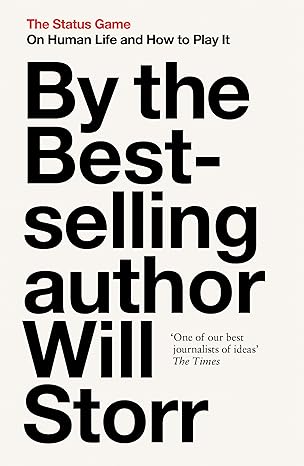
I read something recently where I forget which executives, whether it was Coke or Pepsi, one of the two, someone went through the trash of what they were drinking at their meetings, and almost everyone was drinking Dasani water or whatever and not Coke or whatever, sugar drinks, because they knew better. So they weren’t even consuming the biggest money makers for their company; they wouldn’t touch that stuff with a ten-foot pole.
That’s another thing I think is not to get conspiracy theory. Still, I think delegating to the government or delegating to any entity that isn’t yourself of what you believe or what’s healthy, like the FDA, does the best they can, and they’re doing its best. They have an insane job, but I would not trust them to have my health interests in mind. I think they’re doing a massive sweep to make sure there aren’t charlatans in the healthcare market. But the reality is, if you’re not looking into what you care about, I think you’re in for a tough time. Right. I’ve been a massive use case for figuring those pieces out. Yeah.
So you’d also mentioned polarization. That reminded me of this concept of duality being an illusion, which I believe to be true, that ultimately, it’s all miracles, everything, and it’s designed with divine orchestration and not randomness. So if you buy into the polarity and the duality, then you’re buying into the lie, the fallacy, the matrix illusion, and the bad along with the good; you get the dark along with the light. So, if you want to rise above that, connect to the Tree of Life and all the miracles, and that might be pretty woo-woo for our listeners to hear. Probably not, though, because if they’re still listening to this show, I tend to drop these things into the episode. They’ve moved on by now if they don’t like that stuff.
So what I meant was more polarization in your communication for a pattern interrupt on the front end of making sure when you’re polarizing, you’re using belief systems and mission of something that it’s really getting clear on who it isn’t for. Say what you want about Donald Trump, but I think he is one of the best marketers of all time when it comes to polarization because he makes very sweeping statements that make people feel that he has their best interests in mind. He is incredible at the polarization. He owned Twitter for a very long period of time. He won a presidential election based on it. That was insane. Now, granted, use it as a principle. That’s not exactly what I think most presidents are.
There’s a great book called The Psychopath Test, and the people who want power usually shouldn’t have it because it comes with many downsides. The people who are willing to overcome the downside of being president of the United States have some level of psychopathy to them. So don’t use it in its entirety. However, I think that Donald Trump specifically did a good job of polarization.
Learn less about tactics and learn more about the fundamentals.
Yeah, he did. So let’s circle this back to, or tie this all back into, marketing and direct response, which you’re an expert in. So, what sort of lessons would you want our listener to be walking away from a direct response standpoint? How do they get better at direct response? From the conversation that we had today,
I think it’s like learning less about tactics because I don’t think that’s fully sustainable. I think I will learn more about the fundamentals. For example, if you’re going to do one thing for your business, such as direct response, learn more about your customer. Talk to them. Figure out where they are. Like, the psychodemographic of a human being can be beautiful to know and understand. Also, if you want to talk about the biggest arbitrage opportunity in the world on cold traffic, it’s finding more about your market than the Meta or Google AI knows, right? Because most people want to run the pixels, but that’s where all the expensive people are, right? If you can go, this person has; I know that people who have doulas care about their mental health or care about these things. So now you’re just doing, just tracking doulas, and you can do a lot more stuff in that.
But I think it’s just really learning about the second demographic, really learning about your customer and knowing where, what their heaven is, what their hell is, what their, I mean, there’s a lot of tactics for learning about it, just learning their dreams, their why, their nomenclature, how they talk about it, what do they call a success, what do they call a loss, what do they call, how do they talk to themselves? How do they talk to others? If you can learn all these pieces, that’s the best direct response tool. A lot of people go, let’s test price points and headlines. Those are great. Still, those are going to give you incremental outcomes where the exponential comes from, really understanding and knowing your customer better than the competition.
I just think many people think they know their customers well. And you do. As you scale, like zero to 250 to 500k, you know your customers pretty well because you’re pretty much talking to all of them. But the second you go from 500k to a million. You’re getting cold traffic involved, so it becomes a little bit less. And then one to three, you’re more disassociating, and then three to ten is even more disassociated because, at that point, you’re using unit economics instead of emotional feelings to dictate the company.

And at that stage, doing empathy interviews can be as powerful as just understanding the people who stayed the longest. So, typically, you find your best customers and then talk to them. Everybody wants to tell their story. I just think a lot of people negate, like, our secret sauce in our business is empathy interviews. We’ll literally call your customers and tell them about you. Right? What do you care about? Like, who did you vote for? Why did you vote for them? Talk to me about, like, what’s a life lesson you learned recently? That’s a beautiful one for getting their nomenclature and understanding of how they did that. What is something that, like, where do you hang out? Just talk to me about what you do. Why does this product matter to you? And then you get their explanation.
Also, getting better at your customers selling your product versus you selling your product is very powerful. If you can get customer testimonials from your best customers just going, what’s your name? Why did you buy it? What was your purpose for buying? People will empathize with me, like, “I have that problem, too. Oh, I wish I could have said it that way.” And it’s not the owner saying it; it’s a customer saying it. And then, what was your transformation? Right? What did you change into? That gives them heaven in hell and the opportunity to go. Will this work? Yes. Will it work for me? I’m like that person, right? And if you do well enough with your marketing, you can use the likability principle, which can be very powerful. It can be skin age, belief structure, or value system. How somebody sees like-minded people will change throughout the industry.
But you want to attach people who they go, that’s their persons like me, and they solve that problem. That’s the best direct response you could ever have. If you want to say how directly you can change somebody’s mind and transform, it would be through somebody else, not you saying how great your product was with the exact problem they have, what their outcome was, and what the timeline was for that. That’s instant trust and credibility.
Getting better at your customers selling your product versus you selling your product is very powerful.
Yeah. Wow. Empathy interviews. That comes from Design Thinking, right?
I don’t know where we got it. I’m sure it came from somewhere. Our CMO uses that word, so that’s what I use.
Yeah.
It’s a great therapy skill set to just talk to people.
Yeah, there’s a whole set of processes around it. You avoid binary questions or closed questions. You encourage storytelling.
You don’t want to lead them on.
Pursue tangents, that sort of stuff.
Yeah. It’s the opposite of most things. When you’re trying to sell something to somebody, just be open to where the conversation goes because where you learn the most is in the weirdest stuff. When somebody goes off on a weird tangent about their grandma being in a bowling league, and you go, “That’s incredible. What about that?” Like, “Oh, man. And I go, and we drink beer,” and it’s like, “Cool, awesome. Walk me through that. What is that like for you?” And now you get these insane stories that the competition will never have because they’ll never dig that deep. You get an amazing direct response because it’s like, does your grandma bowl at this bowling league? And you have that. You know, you wouldn’t be that direct, but you could subcontext a lot of that in there and go like, “Oh, that’s one of my favorite memories. And the most amazing stuff is in the details.”
Yeah, that’s amazing. All right, so how does our listener work with your agency, learn from you more, and transform their business through your wisdom?
Yeah. So if you go to the Magic Agency and then we have to fill out a form, basically you have to qualify, and then you get on a call with a salesperson that’ll see if we can help. The biggest thing that differentiates us, I think, is that one of our major core values is love, kindness, and acceptance, and that’s how we market.
When trying to sell something to somebody, just be open to where the conversation goes because that is where you learn the most.
So, if you’re looking for tactics or a negative sales item to get people to feel shame and fear, that is not how we do it. There are a lot of places that will take you on, but that isn’t how we market. So, yeah, I think it’s aligning belief systems of trying to change the world in a better way.
Awesome. And do you actually have your core values of love, kindness, and acceptance listed on your magic.agency website?
I’m not sure. Like, I don’t run the business anymore, so I don’t actually know,
But that’s a good question.
Internal core values. Yeah. Great question.
You want to make sure because you’re the visionary, even though you’re not running the company. You want to make sure that that vision gets put in place on your site, in your brand ethos, and in everything that you guys do.
Yeah, well, we were talking about it earlier. My admonishing admission is that if we were to do an audit or a marketing audit of our site, I don’t think it would do so well. The amazing aspect of the gardener who doesn’t tend to his stuff, I guess we’ve never really had to, right? We’ve always had an abundance of clients, and, you know, our results speak more than that. I love that. I do think it’s a story of why I haven’t optimized it. But I do think that our clients always speak very kindly of us.
It’s a great story.
Yeah, well, everything’s a story, right? But my story, at least, is that we’ve always had a good referral network of people who’ve just had really good results. We’ve had 13 people, at least 13 clients, who’ve had over 1000% growth. And that’s a really cool metric. I’ve worked with Dalai Lama, Tony Robbins, Peter Diamandis, and some of the biggest in the information product space. So, it’s always been easy for us to acquire clients, and now we’re getting better at acquiring the right ones that we want to transform the world with and that we get to use our expertise to do things too. I mean, I love the pathway that we’ve been going on to transform to transform the world.
Yeah, it’s awesome. You’re a light in the world, so keep it up. I’m rooting for you.
So are you, my man. I really appreciate these conversations. Again, one of my favorite podcasts of all time was the last one that we did. I really loved the timeline it took.
Yeah, me too. Awesome. Well, listener, I hope you take some action here and put some of this wisdom into your life, business, and marketing. And again, James, thank you for baring your soul and sharing your insights, experiences, and wisdom to catch you on the next episode. I’m your host, Stephan Spencer.
Important Links
Connect with James Guldan
Connect with James Guldan
Apps and Tools
Books
Businesses/Organizations
People
Previous Marketing Speak Episode
Previous Get Yourself Optimized Episodes
YouTube Videos
Your Checklist of Actions to Take
I focus on understanding my customers deeply through empathy interviews and learning their dreams, whys, language, and what success and failure mean to them.
Build real connections and trust by making my customers feel truly seen, heard, and enough through my mission, values, and beliefs.
Empower my customers with a powerful journey that not only solves their problems but also leads to their new transformations.
Share my customers’ stories and let them sell my product through powerful testimonials, fostering a sense of connection and value.
Make customers feel they are joining a tribe working towards an inspiring greater mission. Aim to sell a lifestyle change and mission, not just a product.
Eliminate doubts and unconscious limits by giving customers permission to level up. Describe the future selves they can become.
Strengthen my self-awareness, self-acceptance, and self-love to give that gift to others. To fully understand and connect with customers, I must go inward first.
Infuse my marketing and messaging with empathy, kindness, and acceptance. Build an authentic emotional connection by showing my brand gets them on a human level.
Focus on one important thing per day rather than an overwhelming checklist. Experiencing small daily wins will build momentum, focus, and fulfillment.
Visit James Guldan’s website to audit my business and grow exponentially.
About James Guldan
 James Guldan is the owner of Magic Agency, a full-funnel growth agency that has generated over $1 billion in sales for clients like the Dalai Lama, Peter Diamandis, Frank Kern, and dozens of other industry giants in the info & physical product space.
James Guldan is the owner of Magic Agency, a full-funnel growth agency that has generated over $1 billion in sales for clients like the Dalai Lama, Peter Diamandis, Frank Kern, and dozens of other industry giants in the info & physical product space.
He’s developed a proprietary system (through 15 years of trial & error) that helps transformative entrepreneurs (like you) scale to 8 figures and beyond using custom funnels and omnichannel traffic strategies.






Leave a Reply